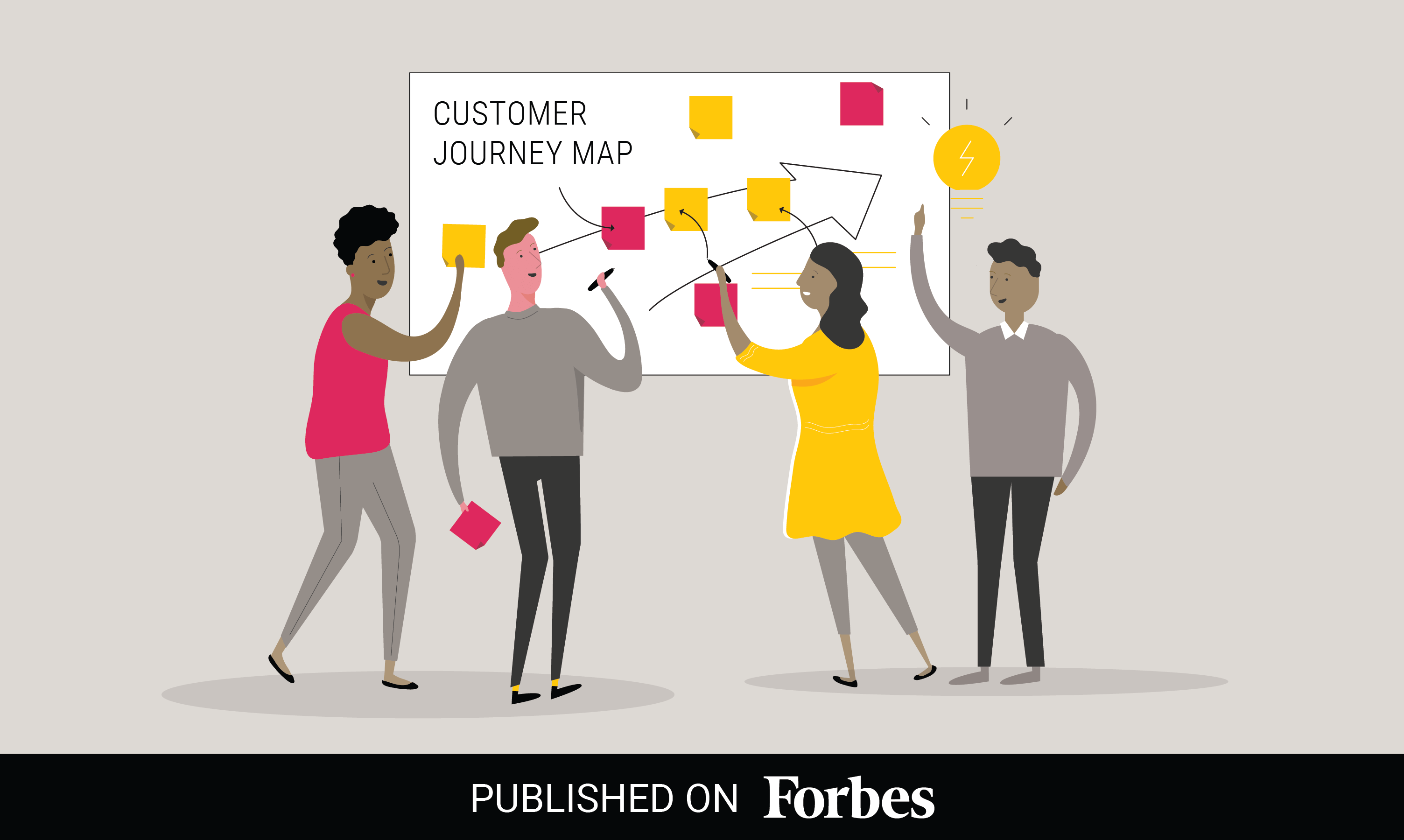This article was originally published on Forbes.com.
The high-touch, enterprise sales process needs a lesson from design thinking: Align yourself around your customer’s journey, and develop tools and training that create a more consultative experience for your customer.
I work with numerous enterprise sales teams at large companies to help them design and deploy more customer-centric sales programs in industries ranging from healthcare to financial services. If you work in the world of enterprise sales — the high-touch, big-ticket, long sales-cycle process that encompasses many software, health care and other business-to-business transactions — you likely know that you have to become a strategic advisor and partner to your customer in order to build productive, long-term relationships. And yet, I’ve observed most enterprise sales processes are still structured as processes; a series of transactional steps organized around your sales flow as you move a customer through your funnel or pipeline from “lead” to “prospect” to “opportunity” and so on.

I believe this is broken thinking. From my perspective, we’ve forgotten that the customer’s journey through the process of finding a solution to their problem doesn’t necessarily follow your company’s process. The customer’s journey seeks a solution and an advisor who understands those needs and can help solve their problem collaboratively. I’ve found the customer is looking to establish a relationship with a trusted advisor and partner — a much more human need, requiring a human-centered approach.
This is where the lessons of design thinking, and specifically service design, can inform a better way. If you look at how customers find a solution to their problem, through their eyes, and align your sales processes, tools and training to their journey, I believe you can surpass your competitors that still force their customers into their process.
This is a method I often coach clients on. Here’s how you can do it in seven steps:
- Map the customer persona and their journey. Create a “persona” for each of your target customers, and map, through their eyes, how they move through the decision making process.
- Identify key moments, emotions, touch points and gaps. The picture that emerges in the journey-mapping process will reveal key touchpoints for the buyer where you can add strategic value. When are they seeking information? How are they comparing data? Do they need help developing a business case and persuasive argument for their boss?
- Align sales processes with key touch points. How can you support the customer at each of these key moments? Is there an opportunity to accelerate understanding of their options and tradeoffs? Are there tools you can provide to help them make comparisons or model “What if?” scenarios using their own data? Can you support their internal advocacy for your solution by equipping them with talking points, persuasive data and visual tools to help them make the case to their peers and senior leadership?
- Support your new process with tools to enable a more consultative sales experience. Arm and equip your sales team with better tools that are people-centric, consultative and tactile to help them accelerate discovery, diagnosis and solution development in the room. Transform a regular sales meeting into a collaborative experience, or, better yet, design a workshop that generates real value for the customer. Imagine using a card-sort exercise to accelerate problem diagnosis or a “future vision” workshop to explore how a solution might drive better business results.
- Equip sales professionals with training to use the tools to become more consultative. It is said, especially in the high-touch world of enterprise sales, “People buy people.” I believe the most successful salespeople will be successful consultants — those who can become trusted advisors to their clients. Invest in training for them to use the tools to build confidence in their ability to bring new value to their customer relationships.
- Learn and adapt by building listening posts for continuous improvement. Think of every tool as a prototype, and constantly assess — with both feedback from customers, and your sales team — what’s working, what’s not and how it can be improved. Making a habit of debriefing each experience not only reveals ways to improve the toolkit but also helps your process adapt to changes in the customer’s buying journey in real time, ensuring that you maintain alignment with your customers.
- Measure the results, and scale what works. I’ve found that most sales organizations have very clear measurements for sales results, but don’t look closely at customer success metrics, either during the buying process or post-sale. Enterprise sales is a long game, and ensuring not only the sale but the customer success after the sale is how the game is won. Measure the customer’s experience through and after the sale at all key touch points, and scale those practices that increase customer satisfaction and business results. Find those sales leaders who are achieving outsized results, and have them mentor their peers in what they do to achieve higher customer satisfaction. Finally, build those discoveries back into your tools and training.
The teams we’ve worked with that have applied these techniques have reported increased sales conversion, improved customer satisfaction and business results, and longer customer retention. And in numerous examples, job-aids and interactive experiences brought into sales meetings have resulted in increased customer engagement, building rapport and accelerated solution alignment.
Because of this, I believe sales teams that align themselves with the customer journey and study customer empathy and consultative techniques will outperform their peers and succeed in building more durable customer relationships. Service design has transformed the world of user experience in consumer products and services – it’s time we apply the learnings to the sales process, tools and training we do to connect customers and their needs to the right business solutions.
If you have any questions about this article or around building a customer-centric culture, please don’t hesitate to contact us.
